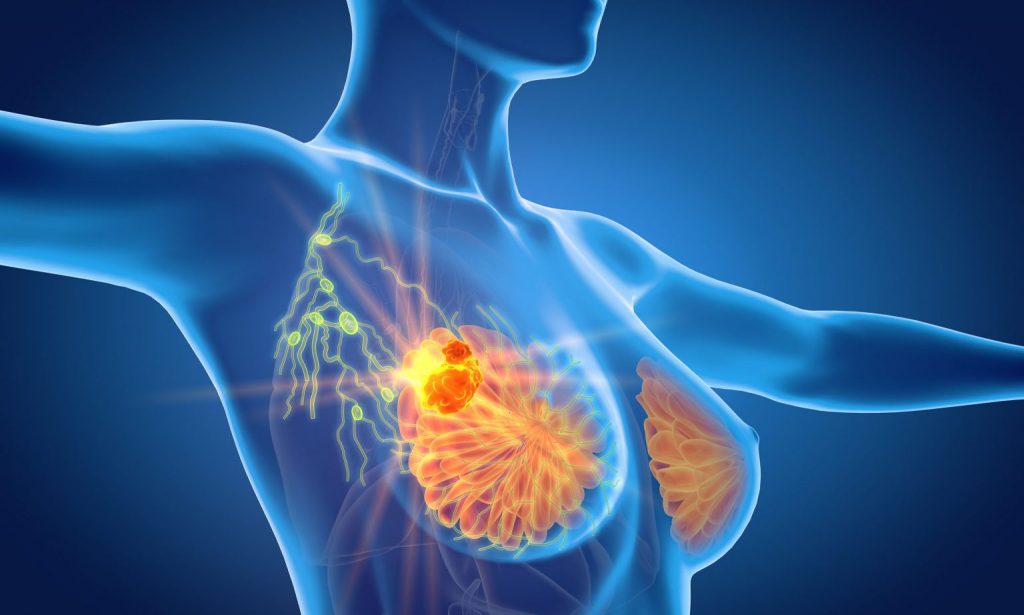A neoadjuvant therapy with trastuzumab, pertuzumab and palbociclib reduces tumor proliferation, as shown by a drop in Ki67, in two expansion cohorts of the NA-PHER2 clinical trial, coordinated by Michelangelo Foundation: in patients with HER2+ and ER+ breast cancer objective response was 78-88%.
NA-PHER2, coordinated by Michelangelo Foundation, is an open-label, multicenter, exploratory phase II study performed in 7 Italian sites in patients with HER2+ and ER+ breast cancer; the original protocol included only a cohort of patients (Cohort A) who received a 4-drug regimen which included trastuzumab, pertuzumab, palbociclib, and fulvestrant. The results, published on The Lancet Oncology in 2018, were very encouraging and found a very rapid and significant decrease of proliferation at week 2, a clinical response rate in more than 95% of patients by week 16 of therapy, and a rate of complete pathological response of 27% at surgery. New data, recently published on npj Breast Cancer, refers to two additional cohorts of patients, named cohort B and cohort C: patients in cohort B didn’t receive fulvestrant, patients in cohort C had a low expression of HER2 and a Ki67 >20%. In cohort B a dual block of HER2 with trastuzumab and pertuzumab together with a block of RB1 with palbociclib resulted in a Ki67 drop at week-2 (mean change −25.7), at surgery (after 16 weeks, mean change −9.5), an high objective response (88.5%) and complete pathological response (19.2%). In cohort C the neoadjuvant therapy trastuzumab, pertuzumab, palbociclib with fulvestrant showed a dramatic Ki67 drop at week 2 (−29.5) persisting at surgery (−19.3), and objective responses in 78.3%.
Tolerability and feasibility of the multidrug regimens without and with fulvestrant were good without observation of any major or limiting toxicity; the drop of Ki67, known as a marker of potential sensitivity to endocrine therapy of HR+ breast carcinoma, was accompanied by excellent clinical and even pathological response. Findings are consistent with the assumption that it may be worth testing the neoadjuvant application of a chemotherapy free approach to women with early breast cancer and triple positive tumors while investigating in more detail the relative role and need for a pharmacologic block of the estrogen receptor, the cell cycle, the erbB-family of receptors.

A neoadjuvant therapy with trastuzumab, pertuzumab and palbociclib reduces tumor proliferation, as shown by a drop in Ki67, in two expansion cohorts of the NA-PHER2 clinical trial, coordinated by Michelangelo Foundation: in patients with HER2+ and ER+ breast cancer objective response was 78-88%.
NA-PHER2, coordinated by Michelangelo Foundation, is an open-label, multicenter, exploratory phase II study performed in 7 Italian sites in patients with HER2+ and ER+ breast cancer; the original protocol included only a cohort of patients (Cohort A) who received a 4-drug regimen which included trastuzumab, pertuzumab, palbociclib, and fulvestrant. The results, published on The Lancet Oncology in 2018, were very encouraging and found a very rapid and significant decrease of proliferation at week 2, a clinical response rate in more than 95% of patients by week 16 of therapy, and a rate of complete pathological response of 27% at surgery. New data, recently published on npj Breast Cancer, refers to two additional cohorts of patients, named cohort B and cohort C: patients in cohort B didn’t receive fulvestrant, patients in cohort C had a low expression of HER2 and a Ki67 >20%. In cohort B a dual block of HER2 with trastuzumab and pertuzumab together with a block of RB1 with palbociclib resulted in a Ki67 drop at week-2 (mean change −25.7), at surgery (after 16 weeks, mean change −9.5), an high objective response (88.5%) and complete pathological response (19.2%). In cohort C the neoadjuvant therapy trastuzumab, pertuzumab, palbociclib with fulvestrant showed a dramatic Ki67 drop at week 2 (−29.5) persisting at surgery (−19.3), and objective responses in 78.3%.
Tolerability and feasibility of the multidrug regimens without and with fulvestrant were good without observation of any major or limiting toxicity; the drop of Ki67, known as a marker of potential sensitivity to endocrine therapy of HR+ breast carcinoma, was accompanied by excellent clinical and even pathological response. Findings are consistent with the assumption that it may be worth testing the neoadjuvant application of a chemotherapy free approach to women with early breast cancer and triple positive tumors while investigating in more detail the relative role and need for a pharmacologic block of the estrogen receptor, the cell cycle, the erbB-family of receptors.